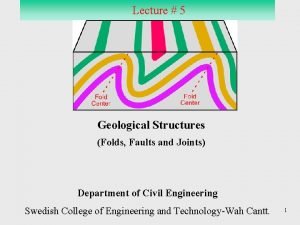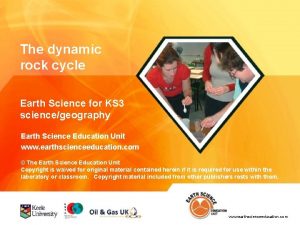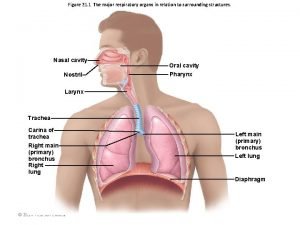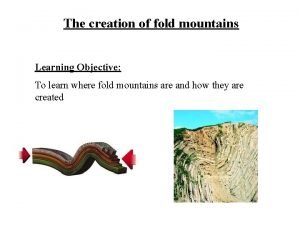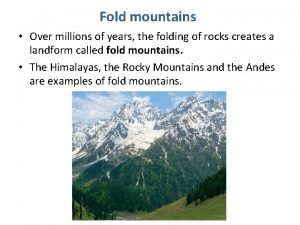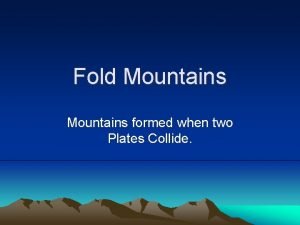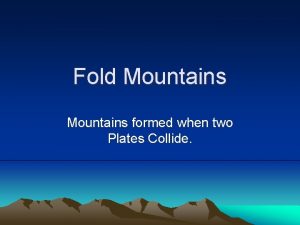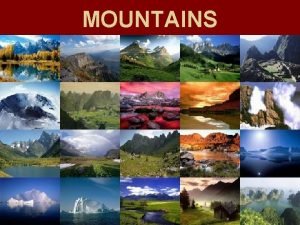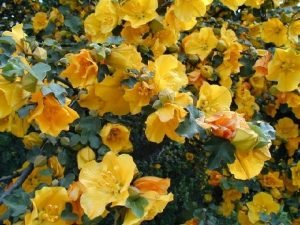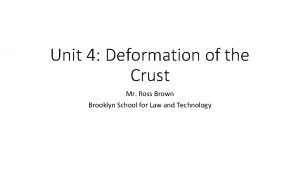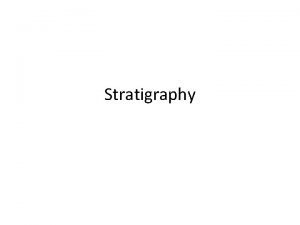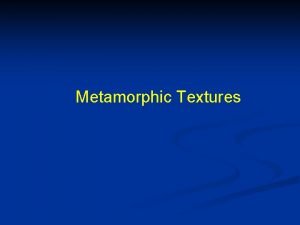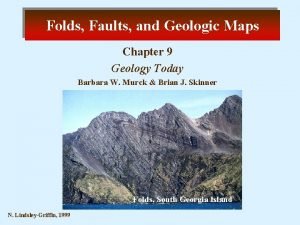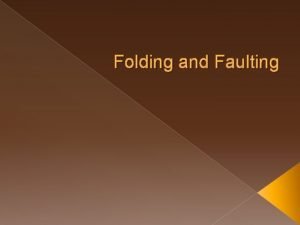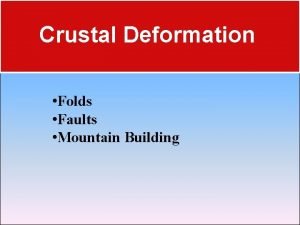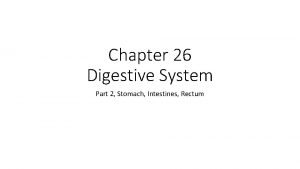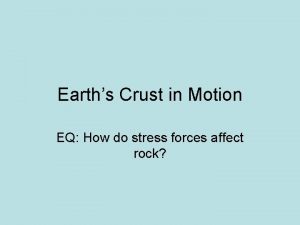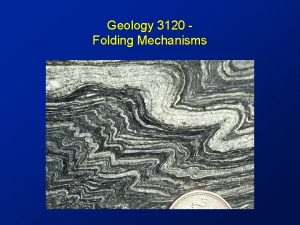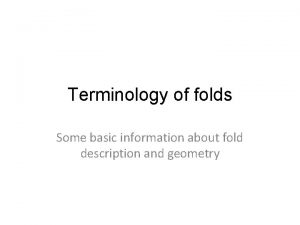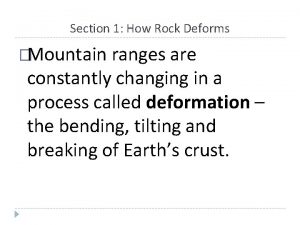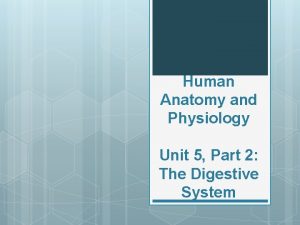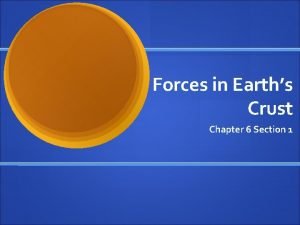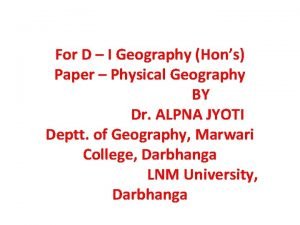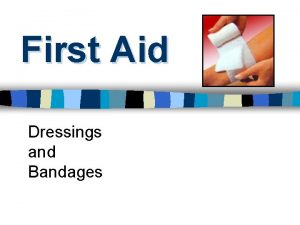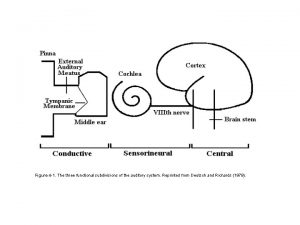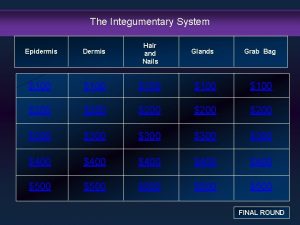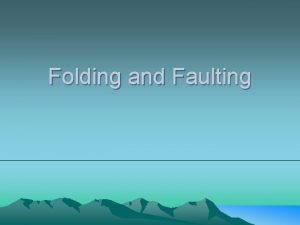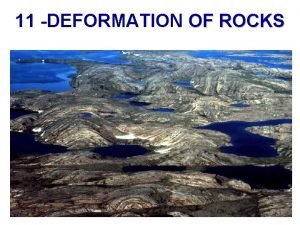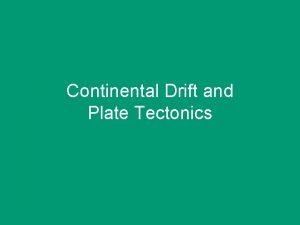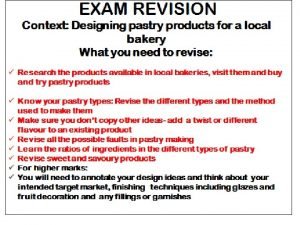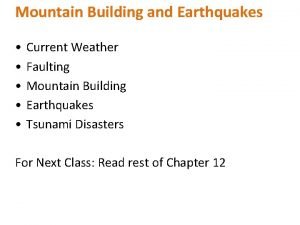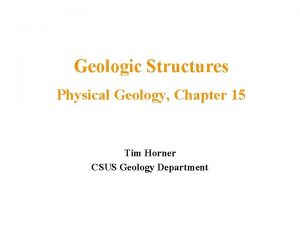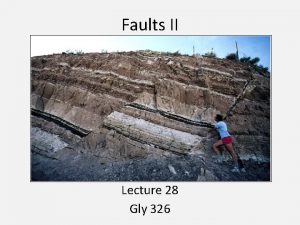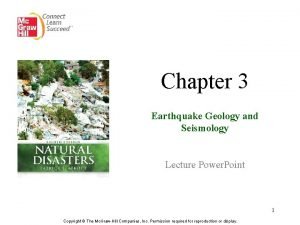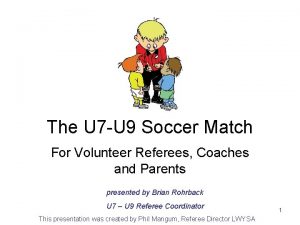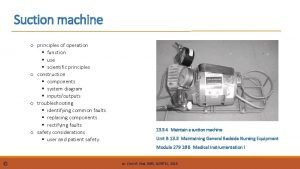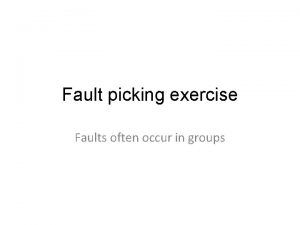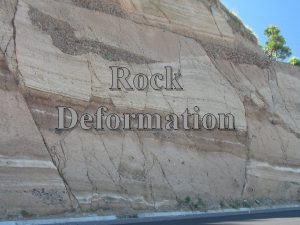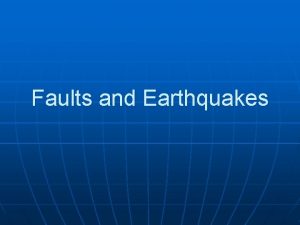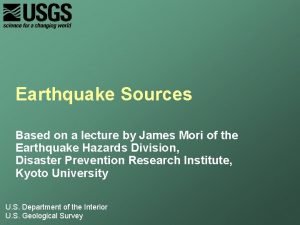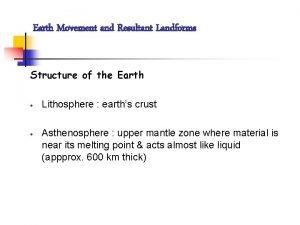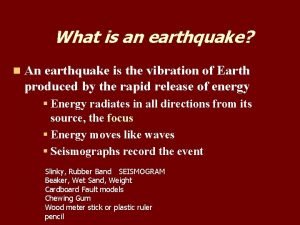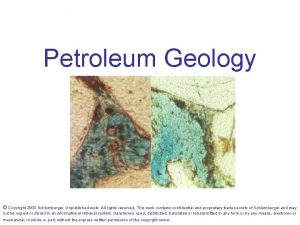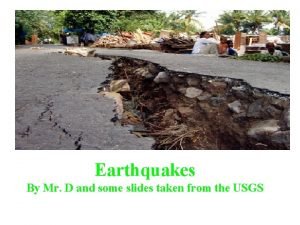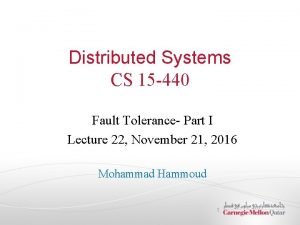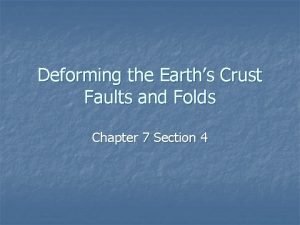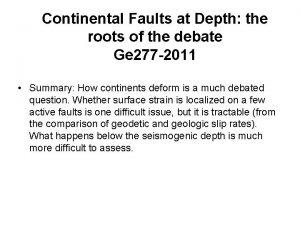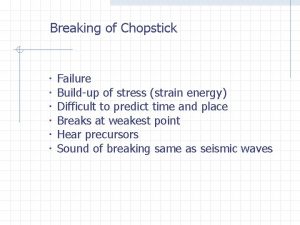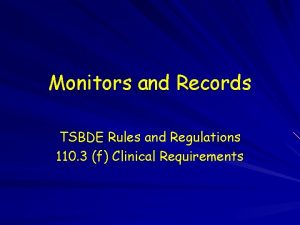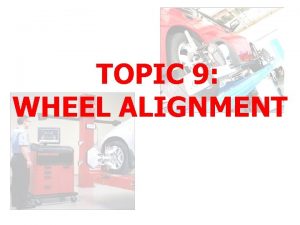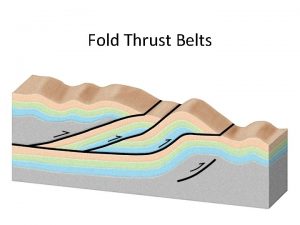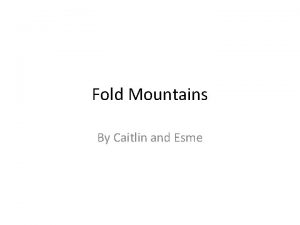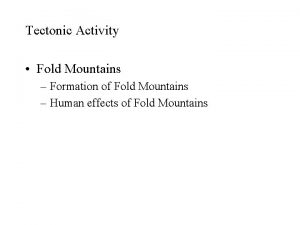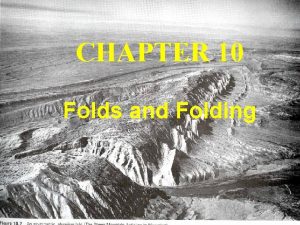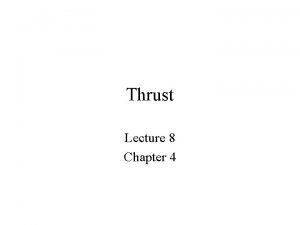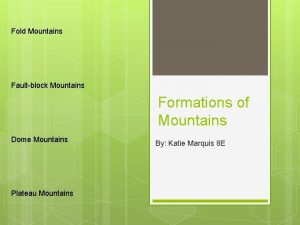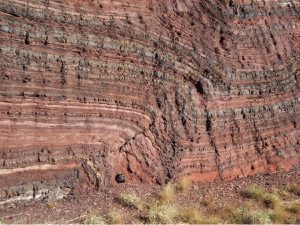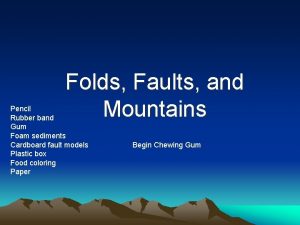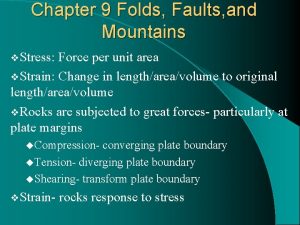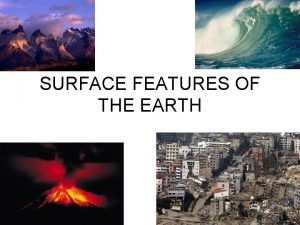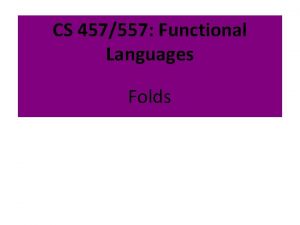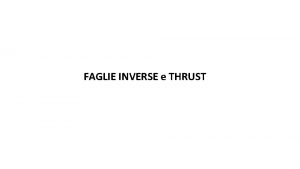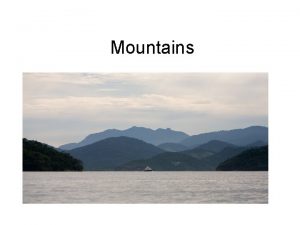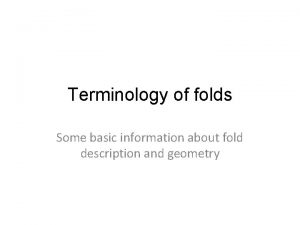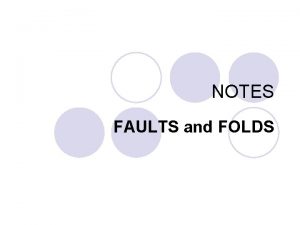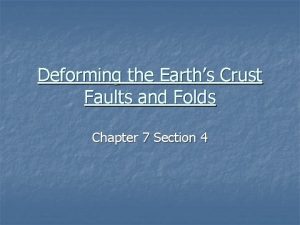Folds Faults and Mountains Fold and Thrust Mountains











































































- Slides: 75

Folds Faults and Mountains

Fold and Thrust Mountains • Enormous mountain ranges form when plates converge. • Contorted rocks show the power of plate tectonics.

Rock Distortion

Convergent Plate Boundaries and Folding Ocean-Ocean collision forms Island Arc: Japan, Aleutians, Cent. Am. Continent-Continent collision forms Folded Mountain Belt: Alps, Himalayans, Appalachians

Evidence of Lateral Compression • Formerly horizontal layers are twisted, bent, or broken. • Some folded rocks are pushed over on their sides, or even upside down.

Folded Sandstone Source: Martin Bond/Science Photo Library/Photo Researchers, Inc.

Studying Faults and Folds • The branch of geology that studies crustal deformation is called Structural Geology. • Geologic structures determine ground stability, and where to build cities.

Stress Units are Pressure: Force/Area Three types of stress a) Compression causes bending b) Tension causes thinning c) Shearing causes one type of faults

Compression, Tension, and Shearing Stress Convergent Divergent Transform

Types of deformation • Elastic deformation up to elastic limit – Springs back to original shape Demo: Pencil • Brittle failure (it breaks) Demo Pencil – Causes: 1. subjected to great stress that exceeds the yield point AKA elastic limit, OR – Subjected to sudden stress AKA “impact” • Plastic deformation – Does not spring back … keeps deformed shape – Demo Chewing gum – Cause can be high temperature – near melting or high pressure … squeezed like a ball of clay

Relation ship Between Stress and Strain can be a change in shape (a deformation) due to an applied stress

Relationship Between Stress and Strain at low Temps and Pressure or Sudden Stress

Relationship Between Stress and Strain under high Temps or Pressure

Factors affecting rock deformation • • Intensity of applied stress Heat –Temperature of the Rock Amount of Time the Stress is applied Rock Composition

Interpreting Deformed Rocks • Most apparent in sedimentary rocks • Importance of deformation – Indicates past plate motions – Indicates other past geological events – Locates specific natural resources • Mapping 101: Rock orientation: strike and dip

Strike and Dip Strike is long line, dip is short line Note the angle of dip given 45 o Strike intersection w horizontal, dip perpendicular, angle from horizontal down toward surface

Folds • Folds def: Bends in rock layers • Types: synclines and anticlines Syncline (downfold) innermost rocks youngest Anticline (upfold) innermost rocks oldest • Parts of a fold (limbs, axial plane, axis) Note: Anticlines and synclines are structures in rocks, not surface landforms

Folded Rocks, Hwy 23 Newfoundland, New Jersey Note highest point Source: Breck P. Kent Adjacent Anticline and Syncline

Folded Rocks (Dorset, England) Center has overturned area Older Overturned Area Younger Lucky we have ways of recognizing right side up What are they? Source: Tom Bean Younger Older

Folded Rock Before Erosion

Folded Rock After Erosion Eroded Anticline, older rocks in center. Syncline is opposite.

Topography may be opposite of Structure Anticline Before/After Erosion Notice center rock oldest

Topography may be opposite of Structure Syncline Before/After Erosion Notice center rock youngest

Fold symmetry a) b) c) d) e) Symmetrical or open folds Asymmetrical folds Overturned folds Recumbent folds Plunging folds

Various Folds

Various Folds (cont'd)

Various Folds (cont'd)

Various Folds (cont'd) Not a good drawing, axial plane should be closer to horizontal

Plunging Folds Demo: Plastic box, water, paper folds Up End Down End Nose of anticline points direction of plunge, syncline nose in opposite direction

Plunging Folds Source: GEOPIC©, Earth Satellite Corporation

Interpreting Folds • Determine if center rocks are older or younger than flanks: fossils, right side up clues (graded bedding and mudcracks) • Are limbs parallel or “Nosed”? • Determine limb dips from measurements, stream V’s. Strike and Dip • Use nose rules for anticlines and synclines

Again: Strike and Dip

Domes and basins 1. Domes 2. Basins 3. Occur within plates 4. Result from vertical forces 5. Geographic examples (later)

3 -D: Dome and Basin

Fractures - Joints: fractures with no relative movement - Faults: fractures with relative movement

Joints: Fractures – with no movement Source: Martin G. Miller/Visuals Unlimited

Fault Type 1 - Dip-slip faults 1) 2) Terms: Hanging wall and footwall Normal faults (a) Grabens (b) Horsts 3) Reverse faults a) low angle called Thrust faults 4) Oblique-slip faults

Dip-Slip Faults

Normal Fault: Hanging Wall Down Hanging wall overhangs the fault plane Key Bed Source: John S. Shelton Especially common in divergent margins

Normal Fault (Hanging Wall down)

Reverse Fault Typical of convergent margins (called “Thrust Fault” if shallow angle) Structural Geology is taught by Dr. Krall (Hanging wall Up) Younger What phase of magma fractionation would result in the placement of this ore body? Which formed first, the ore body or the fault? What common mineral is mostly likely in the ore body? Miners pay geologists to find their lost orebody One friend earned enough to buy a house This poor guy is out of luck

Evidence of faults a) Visible displacement of rocks b) Pulverized rock and “Slickensides” c) Key beds cut out by faulting reappear elsewhere.

http: //pangea. stanford. edu/~laurent/english/research/Slickensides. gif Fracture Zones and Slickensides

Types of Faults - 2 • Strike-slip faults 1 1) Example: San Andreas Transform fault 2) Distinctive landforms (linear valleys, chains of lakes, sag ponds, topographic saddles) 3) Fresh pulverized rock. Transform fault through granite: Arkose sandstone 4) Evidence of Shear stress

San Andreas Fault Source: Georg Gerster/Wingstock/Comstock

Horizontal Movement Along Strike-Slip Fault

Oblique Slip Both strike slip and dip-slip Also seen in Transform Faults such as San Andreas

Types of faults • Strike-slip faults 2 1) Example: Mid-Ocean Ridge Transform faults 2) Small offsets in ridge 3) San Andreas is also ridge offset, but on a huge scale with a historical twist

Faults & Plate Tectonics Divergence Convergence Transform

Plate tectonics and faulting • Normal faults: mid-ocean ridges and continental rifts are the same thing. • Divergent Margins – Surface rock is pulled apart – Hanging wall drops down

Horst and Graben Formation

Horst and Graben Formation

Graben in Iceland Source: Simon Fraser/Science Photo Library/Photo Researchers, Inc.

Plate tectonics and faulting • Reverse and thrust faults: convergent plate boundaries • Hanging Wall is pushed up.

Lewis Thrust Fault

Lewis Thrust Fault (cont'd)

Lewis Thrust Fault (cont'd) Source: Breck P. Kent Pre. Cambrian Limestone over Cretaceous Shales

Plate tectonics and faulting • c) Strike-slip faults: Transform Boundaries

San Andreas Fault

Types and processes of mountainbuilding (Orogenesis) 1. 2. 3. 4. Volcanic mountains Fold-and-thrust mountains Fault-block mountains Upwarped mountains


Types of Mountains • 2. Fold-and-thrust mountains – Formed by Continent-Continent Collisions

Appalachian Mountain System

Model for the Evolution of the Southern Appalachians Supercontinent breaks up, rifts apart. rift Another rift starts moving Africa west. The ocean floor breaks and one side subducts, starting a new island arc. Another Rift Over here somewhere

Model for the Evolution of the Southern Appalachians (cont’d) The ocean floor breaks again, new subduction adds volcanics to an existing microcontinent Weak rifts Net westward movement pushes the ridge, subduction zone and fragment into N. America Rifting restarts to the East

Model for the Evolution of the Southern Appalachians (cont’d) Arc and subduction zone collide w/ N. Am. , westward subduction starts The continents collide

Model for the Evolution of the Southern Appalachians (cont’d) Rifting Restarts

Collisional Mountains ? ? ? (The Grand Tetons in Wyoming) Source: Peter French/DRK Photo Paradigm shifts: What is wrong with our model? More on this later

Fault-block mountains • Rift Valleys, Mid Ocean Ridges • Basin and Range province ? ? ? • Normal Fault Blocks as in East Africa • Divergent Margins? • Paradigm Shifts

Origin of the Basin and Range Southwestern North America Looks different Paradigm Shifts

Upwarped mountains a) Gently bent without much deformation b) Ascent of buoyant mantle material c) Far from plate boundaries d) Adirondack Mountains: Uplift of deep Pre. Cambrian Igneous and Metamorphic rocks

The Adirondack Mountains of Northern New York Source: Clyde H. Smith/Allstock/Tony Stone Images

Anticlines and Oil Early USA petroleum exploration, e. g. Pennsylvania anticlines

Faults and Oil

End of Chapter 9 75
 True vocal folds and false vocal folds
True vocal folds and false vocal folds Fault types
Fault types Deformation rock cycle
Deformation rock cycle Divisions of larynx
Divisions of larynx Lobes of lung
Lobes of lung Fold mountains location
Fold mountains location Fold mountains map
Fold mountains map You can find parallel to fold mountains
You can find parallel to fold mountains How do mountains and valleys form through folding
How do mountains and valleys form through folding Fold mountains
Fold mountains Axillary fold
Axillary fold Thrust fault
Thrust fault Nasal line fillers
Nasal line fillers What is stratigraphy
What is stratigraphy Gastric folds
Gastric folds Porphyroblasts
Porphyroblasts Osn
Osn Folding and faulting graphic organizer
Folding and faulting graphic organizer 13.2 structures of the digestive system
13.2 structures of the digestive system Kerckring folds
Kerckring folds Evento
Evento Gastric folds
Gastric folds Thin
Thin Squeezes rock until it folds or breaks
Squeezes rock until it folds or breaks Absorbent pads for skin folds
Absorbent pads for skin folds Dog nail split lengthwise
Dog nail split lengthwise Buckle fold
Buckle fold Fold terminology
Fold terminology Rock folds
Rock folds Lamina propria
Lamina propria Stress that squeezes rock until it folds or breaks
Stress that squeezes rock until it folds or breaks Voueu
Voueu Triangular bandage folds
Triangular bandage folds Parts of tympanic membrane
Parts of tympanic membrane These folds shape the epidermis into fingerprints:
These folds shape the epidermis into fingerprints: Transcurrent fault
Transcurrent fault Fold
Fold Normal reverse and transform faults
Normal reverse and transform faults Examples of little foxes that spoil the vine
Examples of little foxes that spoil the vine Sentence faults
Sentence faults Classimat faults table
Classimat faults table What is the flour to fat ratio for short pastry?
What is the flour to fat ratio for short pastry? Types if faults
Types if faults Army 5988 example
Army 5988 example Strike slip fault
Strike slip fault Types if faults
Types if faults Domino faults
Domino faults Types if faults
Types if faults Types if faults
Types if faults Lwysa referee
Lwysa referee Foot operated suction machine use
Foot operated suction machine use No faults found
No faults found What is the faults of picking
What is the faults of picking Fold
Fold Ramapo fault line map
Ramapo fault line map Types of faults
Types of faults Strike slip fault
Strike slip fault Unsymmetrical fault example
Unsymmetrical fault example Types of faults
Types of faults Resultant landforms
Resultant landforms Joint design welding
Joint design welding Fault
Fault Normal faults
Normal faults Types of fault in geology
Types of fault in geology The key technique for masking faults is to use
The key technique for masking faults is to use Upward arching rock layer
Upward arching rock layer Continental faults
Continental faults Types of faults
Types of faults Ecc syndrome
Ecc syndrome This is a stage where the audience sits on one side only
This is a stage where the audience sits on one side only Head tilt chin lift jaw thrust
Head tilt chin lift jaw thrust Thrust stage
Thrust stage Pasado simple de forgive
Pasado simple de forgive Steering axis inclination angle
Steering axis inclination angle What is thrust augmentation
What is thrust augmentation Proscenium thrust stage
Proscenium thrust stage

